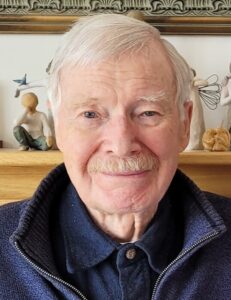 Carl Hodson Durney, a beloved University of Utah professor of electrical engineering and bioengineering who spent 34 years with the university and is known for his contributions to the dosimetry of electromagnetic fields for models of the human body and animals, died Nov. 29 in a Payson, Utah, hospital. He was 90 years old.
Carl Hodson Durney, a beloved University of Utah professor of electrical engineering and bioengineering who spent 34 years with the university and is known for his contributions to the dosimetry of electromagnetic fields for models of the human body and animals, died Nov. 29 in a Payson, Utah, hospital. He was 90 years old.
Durney graduated with a bachelor’s degree in 1958 from Utah State University and a master’s and doctorate degree from the University of Utah in 1961 and 1963, respectively, all in electrical engineering.
He briefly worked for both Boeing Airplane Co., in Seattle and Bell Telephone Laboratories in New Jersey before he joined the staff of the U in 1963 as an electrical engineering research assistant professor. He was appointed an assistant professor in electrical engineering in 1967, an associate professor in 1968, and professor in 1975. He was also a research professor of the then bioengineering department (now Department of Biomedical Engineering) in 1975. He was appointed chair of the U’s Department of Electrical and Computer Engineering from 1977 to 1982.
Durney’s research focused on electromagnetic field theory, physical electronics, electromagnetic biological effects and medical applications, and he is known worldwide for his research in NMR imaging, hyperthermia for cancer therapy, and mechanisms of electromagnetic-biological interaction. He is the principal author of the four editions of the Radio Frequency Radiation Dosimetry handbooks and wrote multiple editions of Introduction to Modern Electromagnetics and Basic Introduction to Bioelectromagnetics. In his academic career, he has published more than 120 research papers that have been cited more than 4,000 times.
Durney was elected a Fellow of IEEE in 1992 and was honored with Utah Engineering Educator of the Year in 1990 by the Utah Engineers Council. He also given the Distinguished Teaching Award and Distinguished Research Award from the University of Utah, the D’Arsonval Award from the Bioelectromagnetics Society, and the Western Electric Fund Award for excellence in teaching from the American Society for Engineering Education. He retired from the U in June 1997.
A devout member of the Church of Jesus Christ of Latter-day Saints, Durney served a church mission in Sacramento after his retirement from the U. He and his wife of 68 years, Maria, had six children.
A funeral service was held Dec. 4 at the LDS Santaquin Second Ward building in Santaquin, Utah.
Click here to read a family memorial about him.